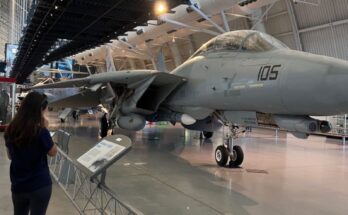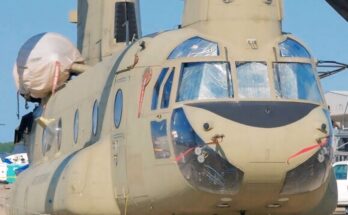
In a dramatic escalation of military operations, reports have emerged that U.S. F-35 Lightning II stealth fighter jets launched a precision strike on the strategically significant Kursk Bridge. The strike, which took place just moments ago, involved the deployment of an enormous 10-tonne bomb—one of the heaviest aerial munitions ever used by modern fighter aircraft. The bridge, a critical logistical route for enemy forces, is now believed to be severely damaged, cutting off key supply lines.
Unprecedented Strike Capability
The Lockheed Martin F-35 Lightning II, widely recognized as one of the most advanced multirole stealth fighters in the world, is primarily known for its precision-guided munitions and advanced targeting systems. However, the use of a 10-tonne bomb signifies a major shift in tactical execution, emphasizing overwhelming force against high-value targets. Traditionally, bombs of this magnitude are delivered by strategic bombers like the B-52 or B-2 Spirit. The ability of the F-35 to deliver such ordnance—either through external pylons or specialized configurations—highlights an evolution in mission adaptability.
Why the Kursk Bridge Matters
The Kursk Bridge has been a vital artery for transporting military hardware, fuel, and reinforcements in the ongoing regional conflict. Its destruction or disabling could paralyze enemy mobility and logistics, providing a decisive advantage to U.S. and allied forces. Military analysts note that the bridge also serves as a symbolic target, representing a critical node in the adversary’s infrastructure. By striking such a strategic point, the U.S. sends a clear message of dominance in both airpower and precision strike capability.
F-35 Tactical Advantage
The strike underscores why the F-35 remains the centerpiece of modern air warfare. Equipped with advanced stealth technology, electronic warfare systems, and data fusion capabilities, the jet can infiltrate heavily defended airspaces without detection. This operation likely involved a coordinated network of intelligence, surveillance, and reconnaissance (ISR) assets to ensure pinpoint accuracy. The F-35’s Distributed Aperture System (DAS) and Electro-Optical Targeting System (EOTS) would have played a crucial role in guiding the munition to its target with near-perfect precision.
Impact and Global Reactions
The immediate aftermath of the strike remains unclear, but early reports suggest massive structural damage to the Kursk Bridge. This could severely hamper enemy supply chains for weeks, if not months. Global reactions are expected to be swift, with adversaries likely condemning the attack as an act of aggression, while allies may view it as a bold and necessary measure to ensure operational success.
As the situation develops, questions arise regarding escalation risks and potential retaliation. For now, the successful execution of this strike demonstrates the lethal combination of stealth, speed, and payload capability that defines the modern battlefield—and cements the F-35’s reputation as a game-changing platform.
Do you want me to make this sound like a breaking news report with urgent tone (e.g., “BREAKING: Massive Strike…”), or rewrite it for a military analysis blog style?
Or should I create multiple versions for social media, like a Twitter/X thread and a short news snippet?


